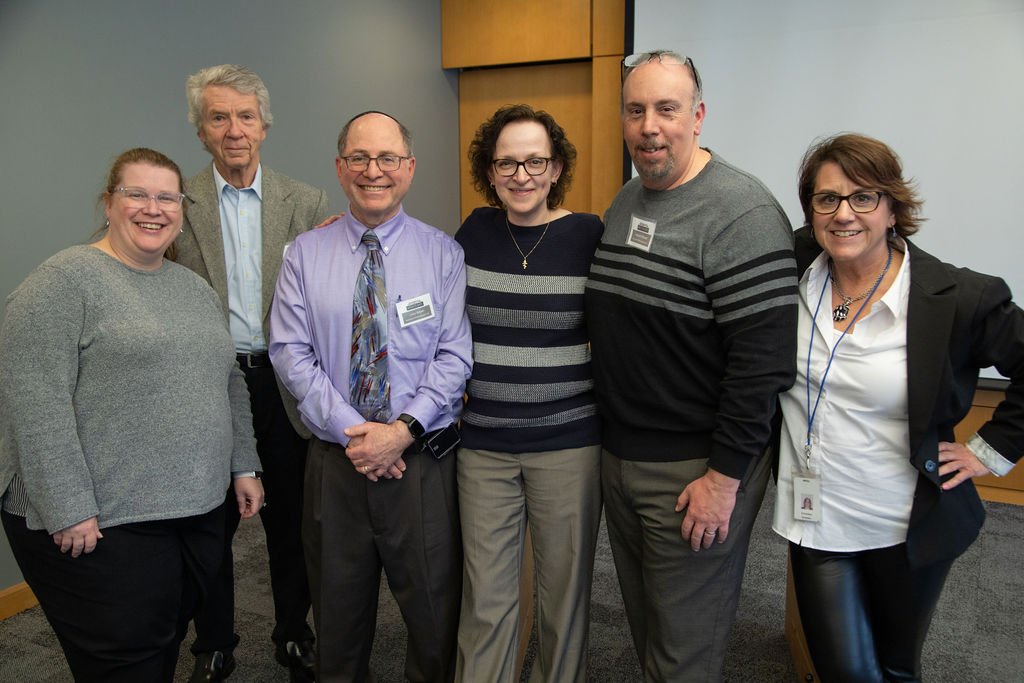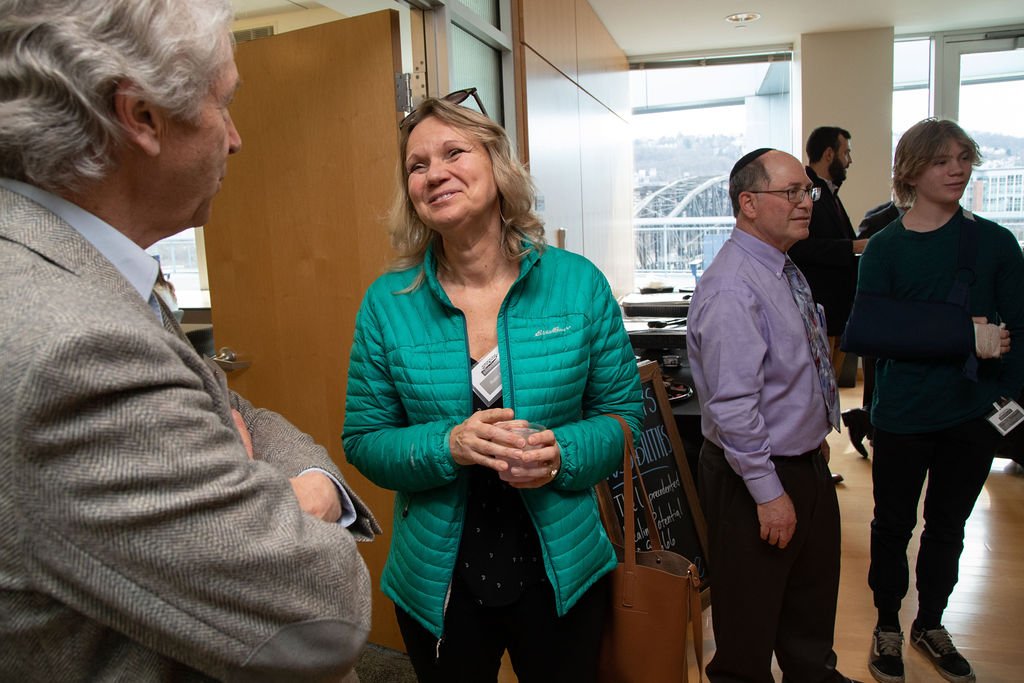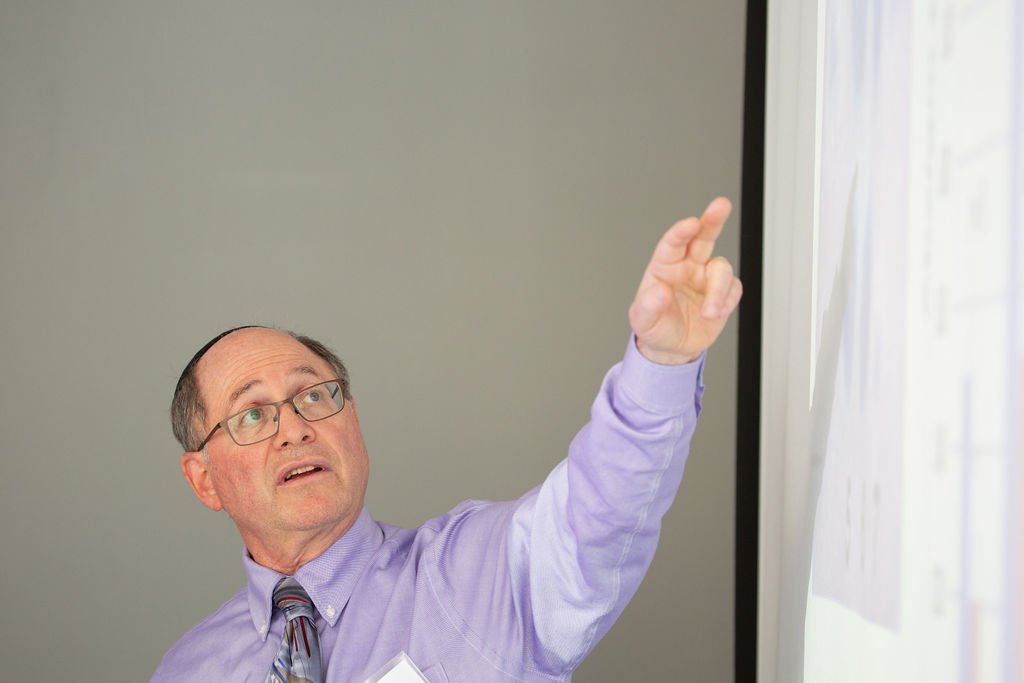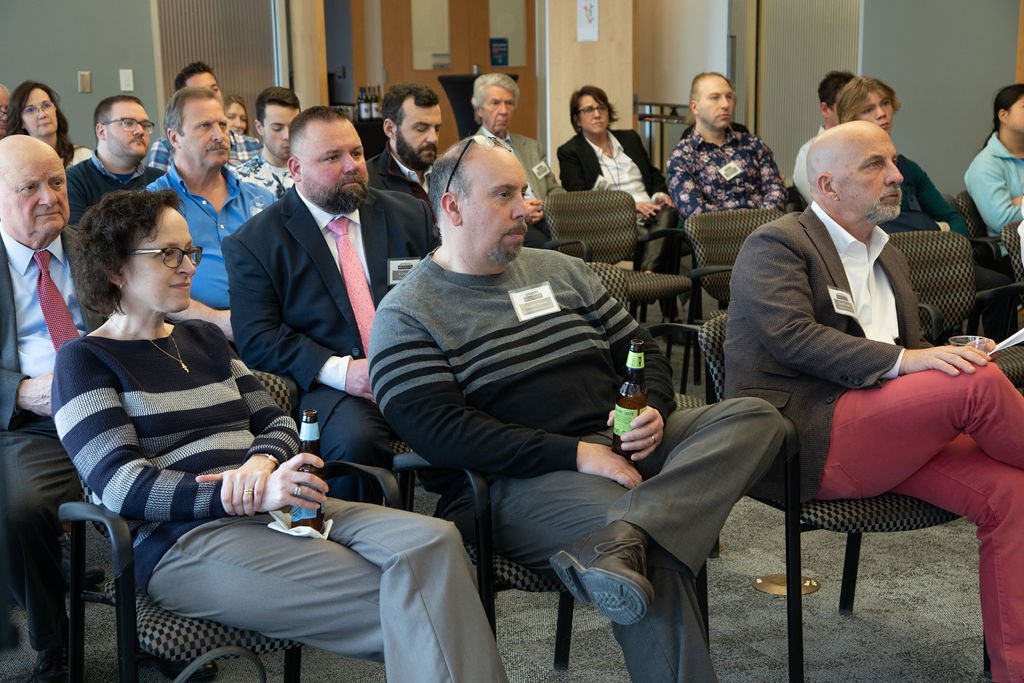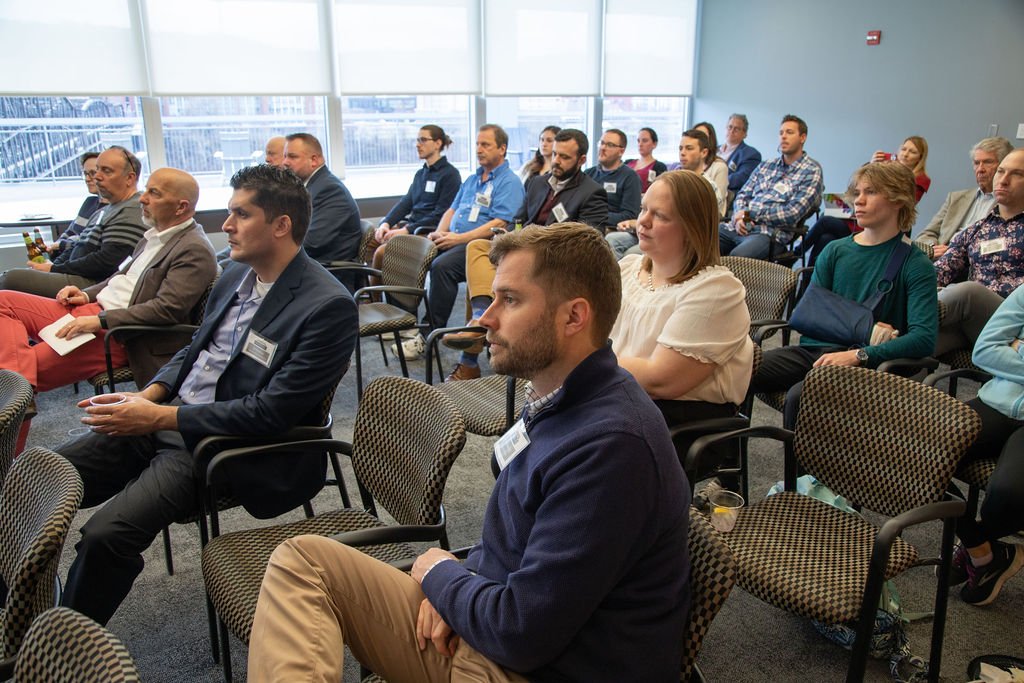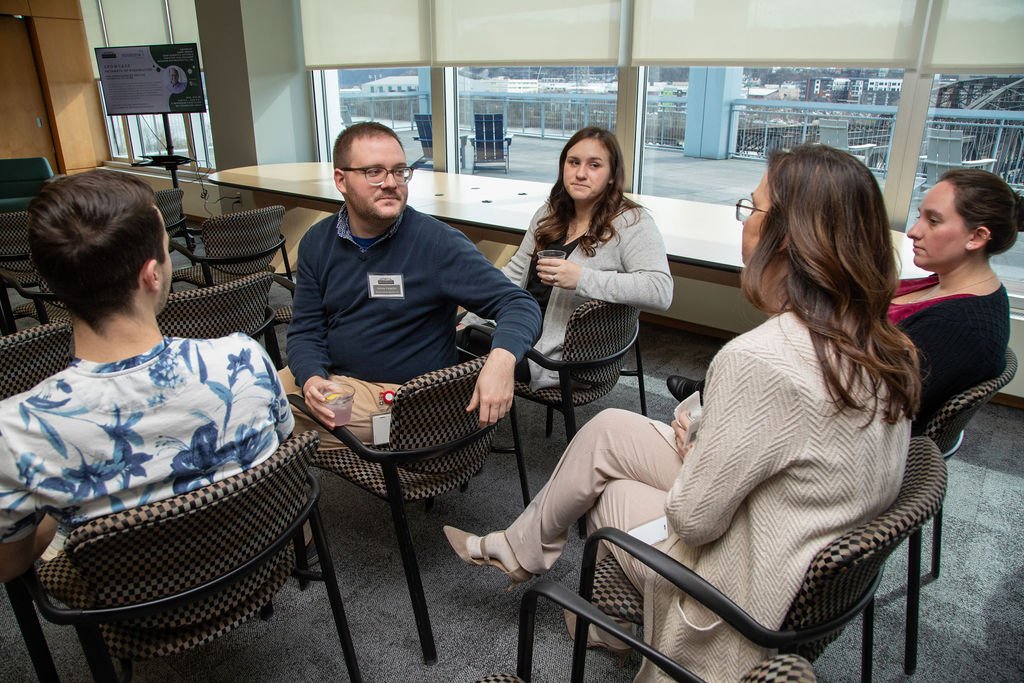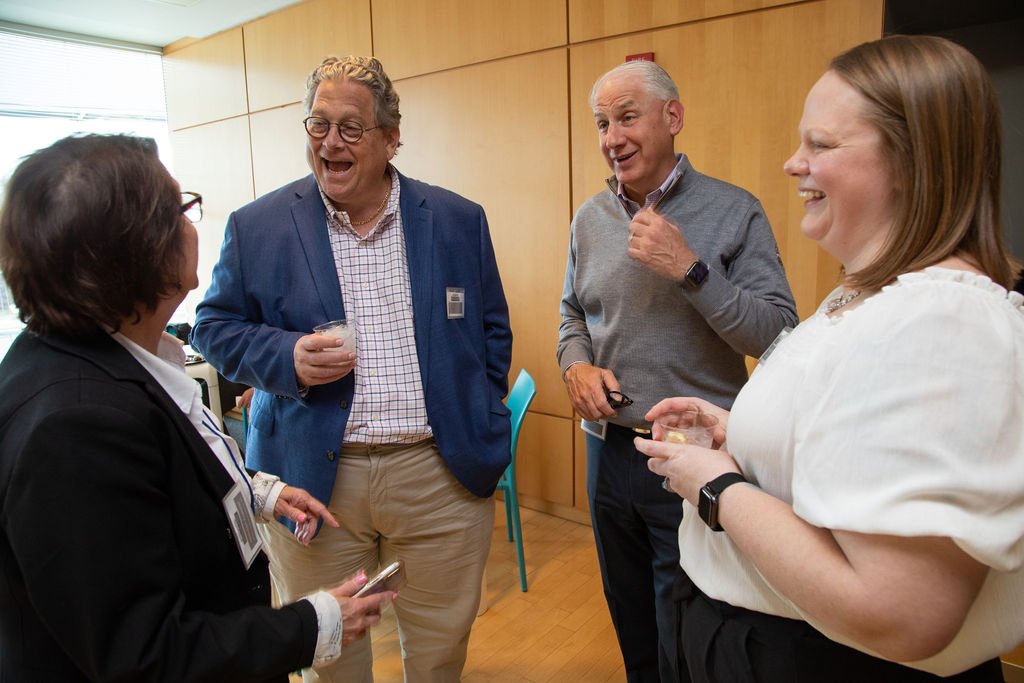Uncovering Pathways of Possibilities at Showcase Centered Around Challenging Diseases
Noveome Biotherapeutics, Inc., a clinical-stage biopharmaceutical company located in Bridgeside, the premier hub for bustling life sciences and research activity in Pittsburgh, is making groundbreaking strides in their efforts to transform the way challenging diseases and conditions are treated. To shed some light onto their recent advancements – which was only made possible by being part of the Bridgeside community, we hosted a Showcase so other tenants could learn more about the pioneering activity happening right in their building.
Pathways of Possibilities - The Unprecedented Healing Potential of ST266 was an interactive session inviting tenants and local community members to learn about ST266 – a first-of-its-kind, multi-targeted, non-cellular novel biologic – and its potential to improve patients' outcomes.
At the start of the afternoon, attendees enjoyed an array of complimentary refreshments and beverages while networking with new and familiar faces on the fifth floor of Bridgeside, which overlooks the north side of the Monongahela River. Shortly thereafter, the moderator of the evening, David Tyndall, Founder and CEO of Collaborative Real Estate guided guests into the boardroom so the presentation could commence.
Once participants were seated, David launched into a brief introduction of Bridgeside’s owners, The University Financing Foundation (TUFF) and Collaborative Real Estate, sharing that they “feel like the value of our buildings is not the building, it's the other people in the building. You maybe don't appreciate how inspirational that can be to some of your neighbors, so we like to gather people together to highlight just that.”
He then went on to speak about the host of the event, Larry Brown, ScD, Research & Development Executive Vice President/Chief Scientific Officer, Noveome Biotherapeutics, Inc.:
Dr. Larry Brown serves as Executive Vice President and Chief Scientific Officer of Noveome Biotherapeutics, Inc. in Pittsburgh, PA. He obtained his doctorate in Biochemistry and Bioengineering at the Massachusetts Institute of Technology under Institute Professor, Dr. Robert Langer. He trained in the Surgical Research Department laboratory of the late Dr. Judah Folkman of Boston Children’s Hospital. Previously, he served as VP of Research at Baxter Healthcare Corporation and has held scientific leadership roles at several startup biotech companies such as Alkermes focusing on diverse areas of drug delivery for therapeutic proteins, monoclonal antibodies, nucleic acids, and transdermal delivery. He maintains strong academic collaborations with MIT’s Deshpande Center for technological innovation.
“Larry was kind enough to join us tonight,” continued David, “because I've heard some of the story that Larry is going to tell and I know that part of the magic of Noveome is its incredible broad-based potential.”
Larry then took the stage, launching immediately into his presentation. He started by acknowledging Dr. David Steed, former Chief Medical Officer (now retired), who gave the name ST266. “It's obtained from the placenta, and the normal gestational period of a human fetus, as we all know, is nine months – but turns out it's 266 days on average.”
He went on to discuss his first contribution to the company, which was the idea of intranasal spray delivery. “ST266 can be delivered directly to the central nervous system and optic nerve using a targeted intranasal spray device that employs a non-invasive, nose-to-brain route of administration – successfully bypassing the blood-brain barrier in the process.”
The complete presentation dove into the following topics further:
Inflammation
“Inflammation is the biological response to harmful stimuli, such as a wound or disease or injury, and results in vascular permeability. Normally, blood flows through a capillary and exchanges oxygen and other nutrients with the tissues. However, in response to injury and disease, there are multiple responses that occur – all with the goal of countering the disease and inflammation in cells,” informed Larry. He continued, “ST266 contains multiple components containing hundreds of growth factors and cytokines, each at very low physiological concentrations, which together we found work in concert to induce anti-inflammatory activity, healing, tissue regeneration, and anti-apoptosis that keep cells alive.”
ST266's rational
The Rationale for ST266 is to mimic natural healing and to use biology's pathway to protect the fetus and support development.
Manufacturing of ST266
Noveome collects and grows placenta-derived amnion cells to produce ST266 in a GMP manufacturing process.
Pre-clinical studies in various animal models
Pre-clinical studies found that ST266 could locally reduce vascular permeability in response to various inflammatory molecules, reduced inflammation following Penetrating Ballistic Brain Injury (PBBI), that ST266 can bypass the blood-brain barrier through targeted intranasal delivery (Larry's first contribution to the company) and intranasal delivery of ST266 restores visual acuity in multiple sclerosis mouse models of optic neuritis.
Clinical trials
The first study showed an unexpected observation in one patient who had lost her taste after having COVID-19 and suddenly gained it back after the trial. According to Larry, “This was evidence that the neuroprotective and anti-inflammatory nature of intranasally administered ST266 could have a significant effect on treating the optic nerve.”
The second study found that ST266 reduced Persistent Epithelial Defects (PED). Twelve individuals received ST266 eye drops four times a day for 28 days. The results showed that all 12 eyes decreased PED area and five closed completely. “This points to the fact that ST266 and its ability to reduce PED's can also enhance healing of epithelial cells,” shared Larry.
The third study conducted found that ST266 reduced UV light burn inflammation and reduced DNA damage.
Clinical trials found no drug-related serious adverse events and no safety concerns from FDA or IRBs. “We believe this is because the concentration of the individual components of the drug is low and working in concert the same way it's protecting the fetus during development. It's doing the same when we're administering them in these preclinical and clinical studies,” Larry noted.
Rare diseases
Defined as affecting fewer than 200,000 people in the United States, there are over 7,000 rare diseases that affect 25-30 million Americans and cause a $ 1 trillion annual economic burden. Many are fatal to premature infants or early childhood and more than 90 percent of rare diseases do not have an FDA-approved treatment.
Necrotizing Enterocolitis (NEC)
A devastating gastrointestinal disease affecting three to nine percent of all premature infants and has a 30 to 80 percent mortality rate. NEC accounts for 20 percent of all neonatal intensive car expenditures in the United States, totaling $5 billion+. There have been no NEC treatment advances in 40 years.
ST266 treatment
ST266 treatment reduced NEC piglet mortality from 38 percent to nine percent. It also significantly reduced NEC severity score of inflammatory cytokines and established gastrointestinal membrane integrity.
As the formal presentation concluded, a Q&A immediately followed. In regards to connecting with the right people (something we’re all about!) who have different perspectives on research, Jordan Peterson, Chief Property Operations Officer, asked “I was struck by the point in the story where you described your first contribution to Noveome’s scientific journey and I think it was the point where you realized the lack of success in the early studies was not a dead end, but rather, it was a challenge of ‘how do we deliver ST266 across the blood-brain barrier?’ So, it strikes me that in this decade-long journey, how important is it to find the right person with the right perspective at the right time? And as you look forward for Noveome, do you know what that expertise is that you're going to need tomorrow or the next year – is it just some random luck sometimes?”
Larry responded, citing “I think it is some sort of luck, but part of it is, having been exposed to so many different research opportunities, reading the literature. Part of it really is knowing what other people have done and how that might affect your work.”
Another member of the audience, Ande Marini, PhD Candidate in the University of Pittsburgh Bioengineering Department, was also really engaged in the session. Ande shared that she is studying how stem cell products can be utilized to improve treatment of cardiovascular diseases, so this discussion was very informative and valuable to her.
For those that didn’t ask Larry a question specifically, they still interacted with the topic at hand by answering a few questions:
As the evening came to a close, Larry shared one final thought with attendees. “While there is no treatment for NEC, I think the door might open for a variety of new indications. It will certainly clearly establish the safety and efficacy in a serious disease that has a lot of things that go array.” And luckily for the Bridgeside community, we get to be privy to this exciting journey – and look forward to learning more pathways of possibilities in the future.









